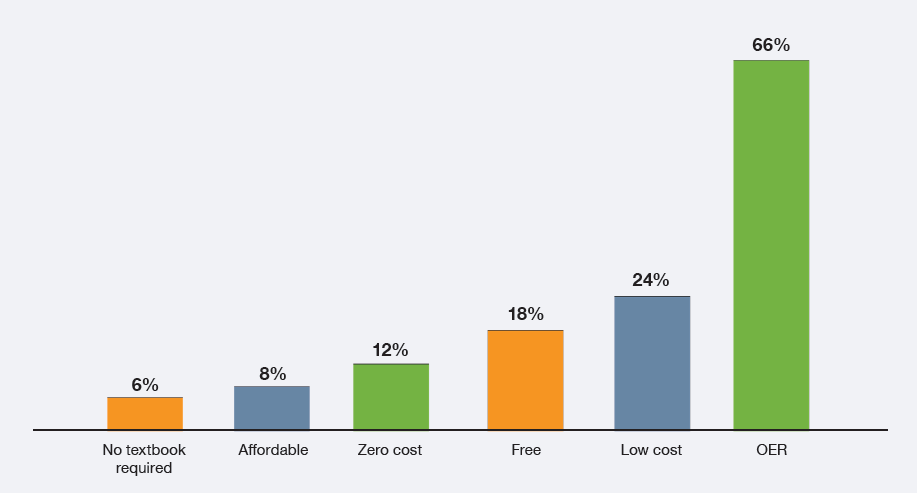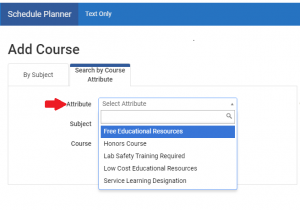7 Texas
Michelle Reed
Course Marking Drivers
I’ve worked at the University of Texas at Arlington (UTA) for the last three years as Open Education Librarian and was recently promoted to the leadership team as Director of Open Educational Resources following a half-million-dollar investment in OER from university administration. It was in my first year as Open Education Librarian that the Texas Legislature passed Senate Bill 810 (SB810), which requires institutions of higher education across the state to provide searchable information to students about OER-only courses. A strong definition of OER was provided:
“teaching, learning, and research resources that reside in the public domain or have been released under an intellectual property license that allows for free use, reuse, modification, and sharing with others, including full courses, course materials, modules, textbooks, streaming videos, tests, software, and any other tools, materials, or techniques used to support access to knowledge.”
However, Texas was not given a very long implementation window. The bill passed in June 2017, effective immediately, with a compliance deadline of Spring 2018. We in higher education know a change of this scope, and impacting as many stakeholders as course marking does, takes longer. A recent survey commissioned by the Digital Higher Education Consortium of Texas (DigiTex) and administered in May 2019 shows only 59 respondents of the 158 two-and four-year institutions that received the statewide survey have a course marking solution in place. The findings were presented in Open Educational Resources (OER) in Texas Higher Education, 2019.[1]

Implementation
Locally, we implemented a quick and free solution that reflects the constraints of system capabilities, no financial support, and a local directive to vet every course to be tagged. Based on what was feasible in the short term and conversations with key stakeholders (i.e., registrar, early OER adopters, curriculum coordinators, student representatives, and the campus store), we incorporated an “educational resources cost” option into an existing “course attribute” drop-down menu under the system’s advanced search options.

The attribute is associated with one of two “values” (“free” or “low-cost”). The low-cost threshold was set at $25 for all required course materials based on informal student feedback and market information.

These filters are not easy to find when searching the schedule of classes, though placement in the course planner, which many students use, is more visible. Additionally, fliers distributed to students and advisors provide information about locating courses tagged as free and low-cost.

Still, the quality of this search feature hinges on the quality and timeliness of reported data. Due to limitations and inaccuracies in the campus store’s platform for course material submissions, Follett Discover, a separate form was created using Qualtrics and is maintained by libraries staff. Both units contributed to the Libraries’ Report Resource Use guide, which presents reporting deadlines, guidelines, and additional information.
Challenges and Lessons Learned
Developing reporting policy and procedures for those actually making the decisions about the course materials selected for UTA classes is significantly more complex than the process of creating a new designation. The successes we’ve had are the result of the following:
- University administration’s willingness to communicate with all faculty and staff about reporting requirements and deadlines, as well as the accessibility and affordability reasons early and accurate reporting is important for our students’ success.
- Collaboration and information sharing between the libraries, campus store, and registrar.
- Involvement of OER advocates actively engaged in outreach with OER adopters to improve what is a traditionally (due to no perceived need) under-reported type of course material.
Many challenges remain. Our limited implementation options in the short term yielded a buried search filter. Additionally, the manual vetting process presents serious sustainability and labor issues. The recent OER investment from university administration creates opportunities for improving reporting processes, search and display usability for students, and data accuracy.
Finally, legislative expectations may conflict with academic culture, which can result in the need to implement short-term solutions while exploring sustainable long-term strategies. These conflicts can remain long after implementation, as the legislative requirement of making course information available at the time of registration shows itself largely incompatible with academic timetables for assigning instructors and granting access to courses within the learning management system where course material selections may be reported.
- Jimes, C., Karaglani, A., Petrides, L., Rios, J., Sebesta, J., & Torre, K. (2019). Open Educational Resources (OER) in Texas Higher Education, 2019. Austin, TX: Digital Higher Education Consortium of Texas and Texas Higher Education Coordinating Board; Half Moon Bay, CA: Institute for the Study of Knowledge Management in Education. ↵

